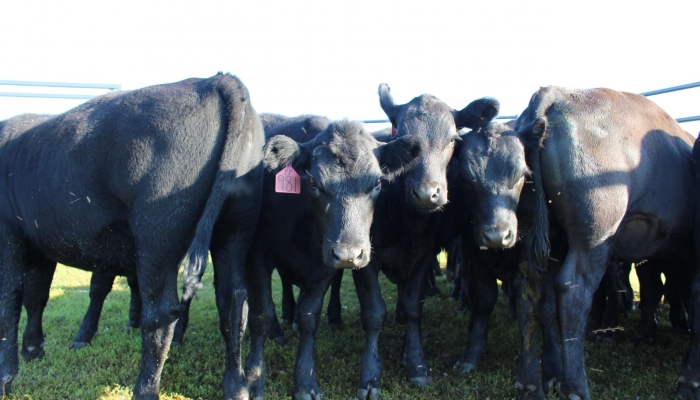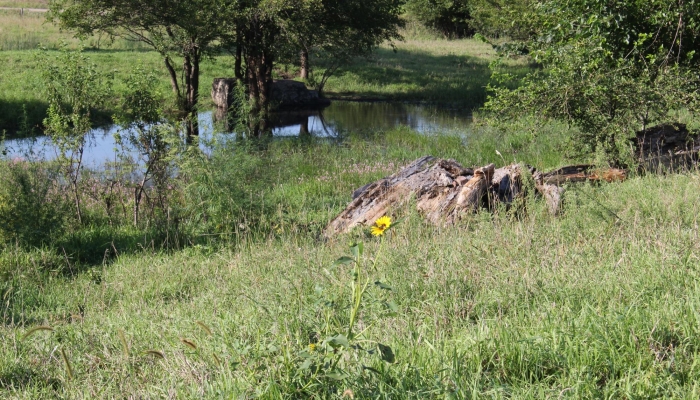A Mooooovable Feast
New equipment encourages wetland restoration through cattle grazing
The sun is rising over a pasture just south of York on a late summer day. Prairie grasses sway in the breeze at the spot, called the Kirkpatrick Basin North. Black-Eyed Susans and Mexican Hats flash their bright yellows and reds to attract the buzzing pollinators. Water is pooled in the low-lying areas and meadowlarks fill the air with sound. Looking at this unassuming patch of prairie, you might not guess how important this idyllic landscape is—or how fragile.
Wetlands like this one provide essential water filtration and aquifer recharge. They are also habitat areas for hundreds of species, including some that are at risk, such as whooping cranes, peregrine falcons and bald eagles. Wetlands in Nebraska are a valuable natural resource that has been negatively impacted in the last 150 years through land development and cultivation. Restoring these areas is the goal of a new collaboration between the Rainwater Basin Joint Venture and the Upper Big Blue Natural Resources District.
Today at the Kirkpatrick Basin, the birds have competition in the noise-making department. On the edge of the pasture stands a herd of black angus cattle who have just been rounded up. Hemmed in by a shiny new portable corral, they bellow their displeasure as they are led into a chute then up a ramp and onto an idling semi. This herd of 40 cow-calf pairs has spent the summer grazing the 355-acre wetland, which sits a mile from I-80 and is managed by Nebraska Game and Parks. Similar to the bison who once roamed freely across this range, the cattle have mowed down many invasive species (such as reed canary grass and smooth brome), turned the earth and fertilized it, and spread seeds of native plants (including switchgrass and prairie clover). The paths they’ve created through the dense brush provide habitat for the local pheasant population and other wildlife. Their presence in this ecosystem is mutually beneficial: the calves have enjoyed an enriching and nutritious environment in which to grow.
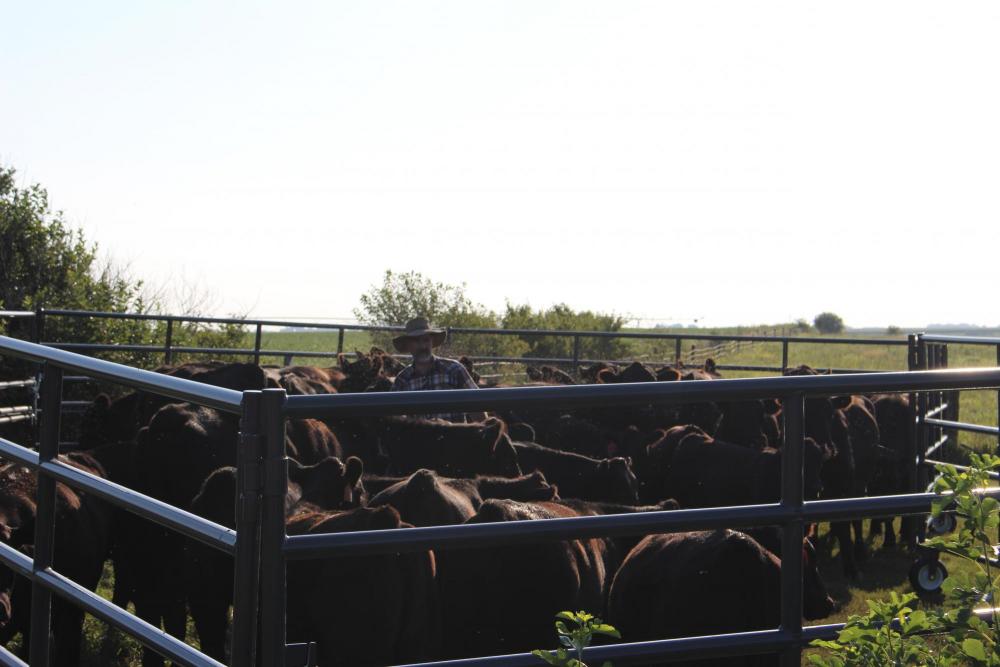
The cattle are owned by Kim and Lindy Siebert, who are using the new Rawhide Portable Corral for the first time today. The corral is one of three purchased by the Rainwater Basin Joint Venture through a grant from the Nebraska Environmental Trust for the use of cattle producers in the Upper Big Blue and neighboring NRDs. The equipment makes it easier for producers to load cattle into and out of wetlands and is provided for free use through the NRDs as an incentive for grazing wetlands.
The Sieberts have raised cattle in York County for four decades. “Just before we got married in 1979, Kim bought his first cattle. So, we started our marriage $100,000 in debt,” Lindy said with a laugh. It appears to be an investment that has paid dividends, as the couple has continued to farm and serve as leaders in the local cattlemen’s association. Their cow-calf operation typically has about 150 pairs each year, which they graze locally—often in wetland areas.
Why wetlands? “That’s the biggest pasture left in York County,” says Kim. “These are some of the only large blocks of grass still available. Yes, they come with rules and regulations that are not always convenient, but it is still the most economical way to raise cattle in this area.”
Shielded by a broadbrimmed sun hat and tall rubber boots, Lindy works alongside Kim, their son and nephew. They ‘yip’ and ‘hep’ and ‘get-on!’ the animals, leading them gently with a long stick used to tap backs or hindquarters. The portable corral is modular, allowing for set up as one large pen or smaller sections. It also features a head gate to make treating individual animals for illness much simpler. This is important as grazing wetlands comes added risk of hoof rot and pink eye. The cattle look healthy today, notes Kim, who watches closely for signs of illness in his herds. “The wetter the year, the less problems we have, because the water is fresher. When the weather is dry and the water is stagnant, we seem to have more problems,” he said.
In fact, it’s been so wet lately that they used a kayak to round up some of the cattle in the wetland this year, Kim says with a chuckle.
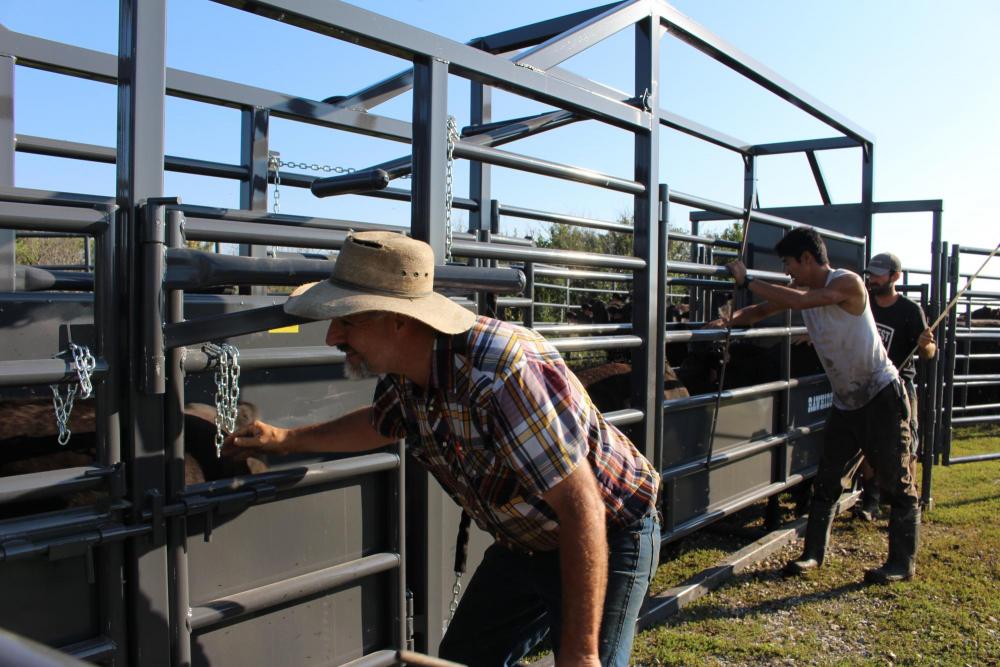
The corral is set up with two holding pens, separated by gates that connect to the chute. When the animals are rounded up, it’s quick work to divide them into pens—cows on one side, calves on the other. The cows moo anxiously at the separation, but it is for the calves’ safety, as the little ones are in danger of being unintentionally trampled by the cows during transport. It takes the Sieberts and their team less than an hour to move the herd from the portable corral onto the semi and a smaller trailer. Later in the day, they repeat the operation at the Kirkpatrick Basin South, where they have grazed 40 cow-calf pairs of red angus for the season. It takes half the time on their second go round.
After a summer of grazing the wetlands, these herds and several others are being moved to the Sieberts’ property, where the calves will be weaned and fattened up. The cows will be moved to graze in another pasture. Rotational grazing protects the land from overuse and allows adequate recovery time for the wetlands. The cattle will return to the Kirkpatrick Basin areas next summer, as the Sieberts’ herds have done annually for the past 20 years.
“Almost all my pastures are wetlands or river bottoms,” says Kim, noting that it makes good financial sense to graze these areas that are not useful for growing row crops like corn and soybeans.
There was a bit of a learning curve with the new equipment, but Kim says it was worth the added effort. He plans to use the portable corral again in the future. “Without this corral, we have to manhandle a lot of panels [to round up and load the cattle] and there’s nothing stationary except the truck. This corral has a nice solid base in the middle to anchor it. That made a big difference. Everything worked a little bit better. The cows went in two at a time and not everything moved with them. Little things like that made the work a lot easier.”
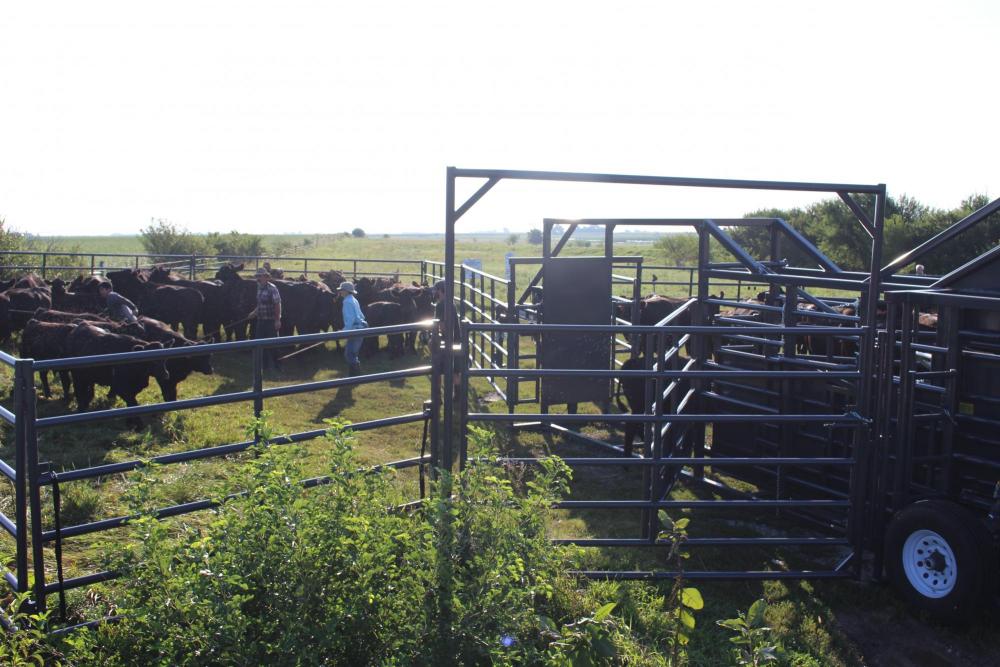
Comments like these are music to the ears of Andy Bishop, coordinator for the Rainwater Basin Joint Venture. The Rainwater Basin is a network of wetlands that stretches across much of Nebraska and includes all of the Upper Big Blue NRD managed area. The region provides one of the world’s greatest waterfowl migration spectacles as tens of millions of waterfowl descend on the Rainwater Basin each spring, not as a destination, but as a way station between southern wintering retreats and northern nesting grounds. Bishop sees use of cattle grazing in the Rainwater Basin as a natural way to manage the ecosystem. “Heavy grazing at the right time means more diverse plant communities in these wetlands,” said Bishop. “By using grazing, we don’t have to use chemical treatments and other mechanical methods to manage the area…..We directly impact the population sustainability of millions of migratory waterfowl by maintaining these wetlands.”
Access to the new portable corral is a potential cost savings for local cattle producers as well, notes Bishop. “Many of them have pasture in the Sandhills or the Flint Hills, so they are shipping the cattle for grazing. Having these wetlands to graze is great because it keeps animals closer to home…Having easier access to the wetlands with this equipment helps them diversify their operation without significant additional work.” In addition to the portable corral, the Rainwater Basin Joint Venture also offers cost-share funds for perimeter fence, livestock wells, and cross fence--the infrastructure to make grazing wetlands and associated grasslands effectively fit into a producers’ operation without a lot of out-of-pocket expense.
“We are excited to partner with the Rainwater Basin Joint Venture and cattle producers in our district on this project,” said David Eigenberg, general manager at the Upper Big Blue NRD. “We see this as being a win-win for the environment and the farmers we serve.”
Interested in using the new corral in a designated wetland area? Contact the Upper Big Blue NRD at 402-362-6601. For information about grazing infrastructure cost-share opportunities, contact the Rainwater Basin Joint Venture at 308-382-8112.

